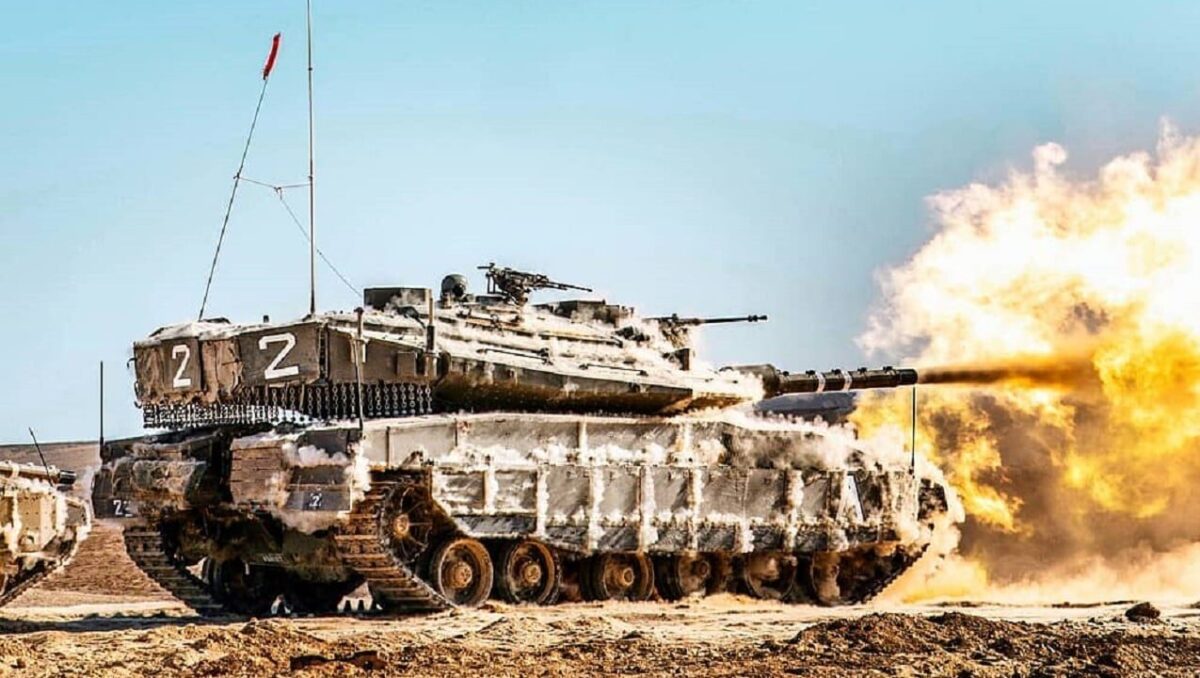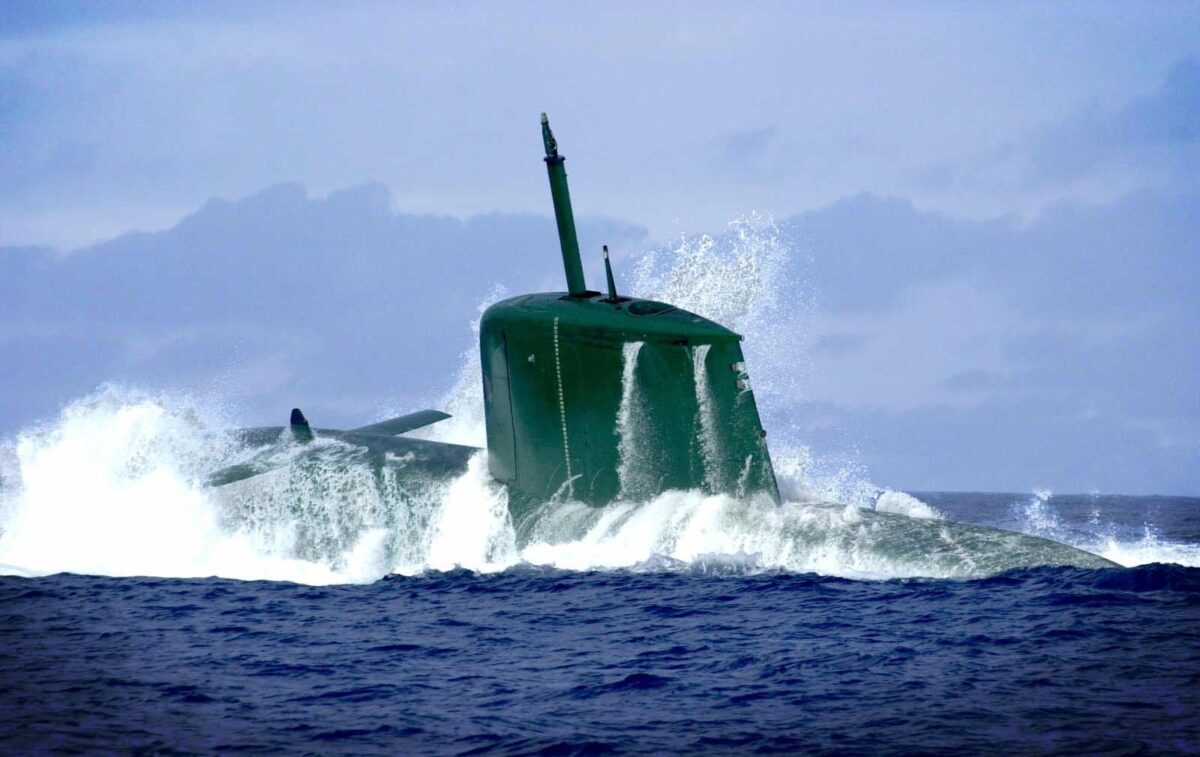Surrounded by hostile neighbors on all sides, Israel’s borders have remained extremely vulnerable since its founding in 1948. A mix of state and non-state adversaries have carried out barrages and operations targeting the Jewish state over the years, forcing the Israeli government to prioritize its security and defense.
The Israeli Defense Forces (IDF) experienced remarkable success in the battlefield following World War II due in part to a Western influx of weaponry. However, due to various international boycotts and specific combat needs, Israel began manufacturing its own military equipment by the 1960’s and 1970’s.
While the Jewish state has many highly capable and advanced weapons systems today, five in particular stand out.
The F-15I Ra’am, F-35I Adir, Merkava main battle tank, Dolphin-class submarines and nuclear weapons represent the best of the best in Israel’s military arsenal.
The F-15I “Ra’am” is a masterpiece
As the IDF’s specialized variant of the U.S. Air Force’s F-5E Strike Eagle fighter jet, the F-15I Ra’am (Thunder) platform sports several key modifications designed to meet Israel’s unique combat needs. Even considering the newer and stealthier fifth-generation fighters that fly the skies today, the F-15E Strike Eagle holds its own. The IDF took an already formidable fighter and made it a true powerhouse platform. Israel’s F-15 variant incorporates more sophisticated weapons, avionics, electronic warfare and communications capabilities. Similar to all of the airframes flown by the IDF, the Ra’am was procured and enhanced to rectify a capability vacuum. During the 1991 Gulf War, Iraqi SCUD missiles struck civilian regions in Israel. Therefore, acquiring a long-range platform capable of identifying and striking targets threatening its borders has become a priority for the Israeli government.

F-15I. Image Credit: Creative Commons.
Following the Ra’am’s entry to service with the IDF in the mid-1990’s, the platform immediately became a critical player in many operations. The F-15I flew in the Gaza War, the 2006 Lebanese War, Operation Pillar of Defense, among others. The platform’s honorable legacy has made it a mainstay in the Israeli Air Force. Although more modern airframes are flown by the IAF, the F-15I leverages a few key advantages. Notably, the Ra’am can carry greater loads of fuel and weapons than its F-16 and F-35 counterparts, a critical asset for a country that could need to strike its long-time adversary Iran in the near future.
Israel flies a specialized version of the F-35 Lightning II
Lockheed Martin’s F-35 Lightning II airframe is widely considered to be the best fifth-generation fighter in service across the globe. Unlike all of the other nations who already operate or are in the process of procuring the standard F-35A airframe, Israeli flies a unique variant specifically designed to support the country’s defense needs. In fact, the Jewish state became the first foreign customer to acquire the F-35 back in 2010. Also a first, Lockheed Martin agreed to produce an Israeli-specific prototype that would serve unique mission sets.
The F-35I Adir sports a range of homegrown Israeli components, including an electronic warfare system (EWS), a locally-developed helmet-mounted display and datalink functions specific to the IDF. The “Mighty One’s” truly top-of-the-line add-ons have elevated the platform to represent a staple in the IAF’s arsenal of airframes. Perhaps the Adir’s single flaw would be its lack of long-range capabilities, which had previously been fulfilled by the F-15I.

Photo by Amit Agronov via IDF.

F-35I Adir. Image Credit: IDF Flickr Page.
However, Israeli news outlets reported that the IAF possesses a new asset that would allow the platform longer distances without the need for refueling. Additionally, the IDF is set to procure America’s KC-46 refueling rankers by 2025.
Introducing Israel’s Merkava Main Battle Tank
Israel’s Merkava family of main battle tanks represent the backbone of the IDF’s armored corps. The powerful vehicle was developed in the 1970’s, following the collapse of the joint-tank initiative with the United Kingdom. The Israeli government understood at this point that it would have to depend on its own engineering and manufacturing capabilities in the long run since foreign help or collaboration may not always come to fruition. In Israel’s earlier wars, its armored corps suffered greatly and many tank crew members were killed. To rectify this, the Israeli Ministry of Defense opted to develop a vehicle that could maximize protection to its crew.

Israeli Merkava Tank. Image Credit: Creative Commons.
The Merkava Mark Iachieved this goal and more. In the earlier variants of the Merkava MBT, thick-spaced composite armor and an atypical engine and transmission layout provided crews with extra protection. The current iteration of the Merkava, the Mk IV, incorporates an even greater shield- the Trophy Active Protection System. This highly advanced defense system provides tank crews with a greater degree of survivability against incoming anti-tank missiles and other projectiles by allowing the crew to locate and intercept oncoming barrages. The Merkava, along with the IDF’s other domestically produced military equipment, will remain a mainstay in Israel’s defensive strategy for years to come.
Israel’s Dolphin-class submarines may have a Vertical Launch System (VLS)
The Israeli Navy currently operates five diesel-electric Dolphin-class submarines out of Haifa. While Israel designed the submarines, German manufacturers actually constructed them. These underwater vessels are widely believed to house Israel’s nuclear deterrent. The Jewish State understood by the end of the 20thcentury that in order to ensure its long-term survival, maintaining a robust nuclear triad of air, sea and land-based nuclear weapons would be essential.
According to the Nuclear Threat Initiative, “The German government has refused to comment on modifying the Dolphin-class submarines delivered to Israel to fit cruise missiles armed with nuclear warheads.6 However, German officials such as former Head of the Policy Planning Staff of the German Ministry of Defense Hans Rühle, have stated that they assumed Israel intended to equip the submarines with nuclear weapons.”

Israel Dolphin-Class Submarine
Some industry experts predict that the Dolphin-class ships are equipped with a nuclear-tipped cruise missile with a range of 1,500 kilometers.
As tensions between Israel and Iran have flared in recent years, the potential possession of a sea-based nuclear deterrent will serve as a paramount defense for the Jewish State.
What about Israel’s land-based nuclear weapons?
Similar to how Israel’s Dolphin-class submarines’ nuclear capabilities remain unknown, the entirety of the Jewish state’s nuclear potential is unconfirmed.
Israel has maintained its nuclear-ambiguous policy since its founding, however, many experts believe that the Jewish state has at a minimum 90 plutonium-based nuclear warheads in its arsenal. In recent years, the IDF has carried out several “rocket engine propulsion’ test launches which analysts believe were actually intended to examine the country’s latest Jericho missile variants. This fall, Israel’s then-Prime Minister Yair Lapid made a rare allusion to the country’s suspected nuclear abilities. He spoke of the country’s “other capabilities” at an event featuring Israel’s Atomic Energy Commission, which most likely referred to nuclear weapons. While Israel has yet to confirm its actual possession of such weapons, the potential existence of such an arsenal will continue to serve as a deterrent to the Jewish state’s adversaries.
Maya Carlin, a Senior Editor for 19FortyFive, is an analyst with the Center for Security Policy and a former Anna Sobol Levy Fellow at IDC Herzliya in Israel. She has by-lines in many publications, including The National Interest, Jerusalem Post, and Times of Israel.

